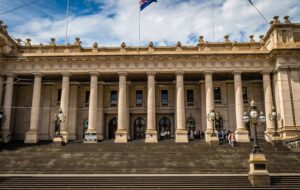With all the media coverage of the Budget 2022, you will no doubt have heard about the “cash splash” spending spree that the government has gone on to win votes in the upcoming federal election. But what’s really there for individual taxpayers to combat the cost-of-living increases caused by inflation?
Firstly, the $420 for individuals to help with the cost of living is not actually a cash payment. Rather, it is an increase in the low- and middle-income tax offset (LMITO) for the 2021-22 income year only. For eligible individuals that lodge their tax returns, the maximum LMITO they can receive for the 2021-22 year is $1,500 (up from the current rate of $1,080).
For taxpayers with a taxable income up to $37,000, the LMITO for the 2021-22 year will be $675 after the increase. Those with a taxable income of between $37,001 and $90,000 will receive a LMITO of between $675 and the maximum rate of $1,500. Taxpayers with a taxable income above $90,000 will have the LMITO reduced by 3 cents for every dollar they earn above that amount. Those that earn more than $126,000 will not be entitled to the increase in LMITO in line with the current rules.
Therefore, only some taxpayers will be eligible and not all will receive the maximum rate of $1,500.
Secondly, what was not announced in the Budget is perhaps more important than what was announced. The government declined to announce the extension of the LMITO beyond the current legislated lifespan of the 2021-22 income year. This means that for 2022-23 income year, those that earn below $126,000 will actually see their share of tax go up.
While the low-income tax offset (LITO) will continue to apply through to the 2022-23 income years, it will be at a lower rate than the LMITO and individuals that were eligible for both offsets may be in for a tax shock in the 2022-23 income year. For example, an individual who has a taxable income of $37,000 and is eligible for both LMITO and LITO would be entitled to a maximum offset of $1,375 for the 2021-22 income year but will only be entitled to the maximum LITO offset in the 2022-23 income year.
To recap, the maximum LITO rate is $700 for those individuals that have a taxable income of up to $37,500. It is then reduced by 5 cents for every dollar earned above $37,500 up to $45,000. At $45,000 the maximum LITO will be $325. It will then reduce by 1.5 cents for every dollar above that until $66,667 is reached. Those that earn $66,668 and above are not entitled to the LITO.
Finally, for those who are not working and on an eligible welfare payment, the government announced in the Budget a small $250 one-off payment in April 2022 to help with the cost of living. The payment will be tax-exempt and will be available to those on the age pension, disability support pension, parenting payment, carer payment/allowance, youth allowance, Austudy/Abstudy, and Jobseeker, to name a few. It will also be available to pensioner concession card holders and Commonwealth senior health card holders.




